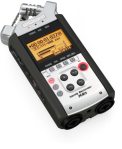The title of this entry alone will probably stop most people from reading on, but for those of you who’ve continued, be prepared for some cold harsh comments.
I had a lousy weekend – one of those weekends where everything went wrong – first the power steering went on my car while I was driving, then my printer broke – I got a message saying something like it was past it’s life – and then I fell halfway down the basement steps and landed hard on my elbow. My elbow is still throbbing but as long as I can move my arm, I think I’ll opt out of a trip to the emergency room because I can’t afford the medical bills – I’m already strapped by paying an annual premium of $18,000 with a $7500 deductible on each occurrence. What’s wrong with that scenario? But I’ll rant about that another time.
What really bothered me most this weekend – even with all the crap above – were some comments made in response to an entry I wrote as a contributor on the blog of my trade association. My entry was about “The Business of Video Production” and it was the last post of the week in a series of posts about video. The person writing the comments was clearly upset that his photographic trade association had been blogging about video. He was angry that so called “experts” who had themselves just recently gotten into video by buying a DSLR were claiming to be “god’s gift to video production” and encouraging members to move into video which he was sure was a terrible business move. I took offense with his words. I have been involved in video production for over 11 years and not new to the game as he implied and I don’t shoot with a DSLR but a “real” video camera and even if I did – the tool in itself doesn’t define my skills as a motion shooter. But what bothered me was the fact that he took his time to complain about a blog entry that I wrote, in my own free time with the good intentions of “sharing” my knowledge with my peers. No good deed goes unpunished.
After thinking about it, I realized that I had written something that he didn’t want to hear. He wanted to hear that the photography business will go back to the way it used to be. He was angry and he took it out on me. He needed someone to point the finger at – to blame for the poor economy and its effect on the photo business. This morning Seth Godin wrote a blog entitled “Frightened, clueless or uniformed” where he writes “In the face of significant change and opportunity, people are often one of the three.” And this was a perfect example where this person was all three.
My first reaction was to question why I should devote my time to writing and sharing with others through social media only to be criticized for it. But I’m not one to retreat and let the whiners of the world win. I was raised by a father who was a city smart kid growing up on Chicago’s West Side and a mother who grew up in the remote reaches of the Upper Peninsula in Michigan. They didn’t tolerate whiners and complainers and people who wouldn’t take responsibility for themselves. They taught me that if I wanted something, it was up to me to make it happen and if I didn’t – I had no one to blame but myself. More importantly they taught me to believe that I could achieve anything I put my mind to. And that is how I try to live my life – in pursuit of my dreams.
So my suggestion to people who don’t happen to like what I’m suggesting or writing about – make some suggestions yourself. Contribute – share – do something positive for yourself and others. Come up with solutions – find opportunities – keep your mind open to possibilities. Stop kicking the dog. Stop being angry that things aren’t the way they used to be and start looking at how things are better because of technology – and start using it to make a positive change in your life.
Life’s too short to spend it complaining.










































